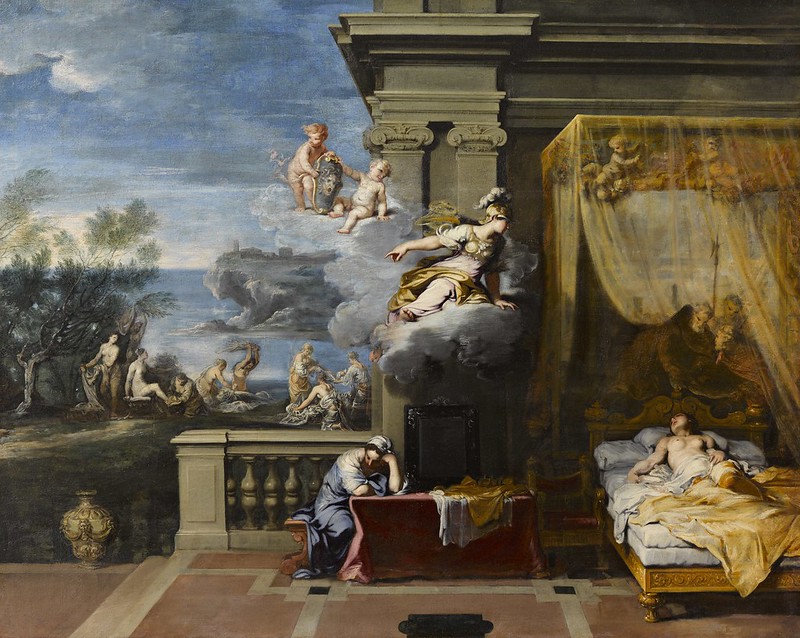Giovanni Benedetto Platti (1697-1763)
- Messa (in La maggiore) a 4 voci
Performers: Simona Cerboneschi (soprano); Piera Casula (contralto);
Fabio Fresi (tenor); Paolo Ruggiero (baritone); Antonio Pala (bass);
Cantori della Resurrezione, Orchestra Cooperativa Teatrio e/o Musica di
Sassari;
Antonio Sanna (conductor)
---
Italian composer. His death certificate gives his age as 64, which would indicate that he was born in about 1698, but information in a letter of 7 October 1764 from Domenico Palafuti to G.B. Martini suggests that the real date of birth could be 9 July 1697; however, Michael Talbot's discovery in Venice of a document mentioning Platti as belonging to the arte dei sonadori at the beginning of 1711 means that he cannot have been born later than 1692. Little is known about him before 1722, but in Venice his teachers might have included Francesco Gasparini, Albinoni, Vivaldi, Lotti, Alessandro Marcello or Benedetto Marcello. His father Carlo Platti (c.1661 - after 1727), a violetta player in the orchestra of the basilica of S Marco, may also have taught him. According to Palafuti in his letter to Martini, Platti travelled to Siena before 1722 and encountered Cristofori's recent invention, the ‘cembalo a martelletti’, but this is not backed up by any other evidence. It would, however, explain the harmony, style and technique of some of his harpsichord sonatas. In 1722 he went to Würzburg with a group of musicians under the direction of Fortunato Chelleri. There he entered the service of the court of the Prince-Archbishop of Bamberg and Würzburg, Johann Philipp Franz von Schönborn. On 4 February 1723 he married Maria Theresia Lambrucker, a soprano serving at the court. They had eight children, some of whom were musicians, but no music attributable to them has survived. Platti's position at the Würzburg court was as a kind of factotum: he was a singer, he played various instruments, including the violin, the cello, the oboe, the flute and the harpsichord, he performed and he composed. Three letters, only one of which is in Platti's hand, have survived at Würzburg, but they add nothing to our knowledge of his time in Germany. He met the artist Giambattista Tiepolo, who was in Würzburg between 12 December 1750 and 8 November 1753 to decorate the Residenz with frescoes, one of which includes the only known portrait of Platti. Platti continued to work at the Würzburg court until his death.
His surviving output is not very substantial in comparison with that of his contemporaries. It displays two constant characteristics: an exceptional sense of structure and, even in the least inventive pieces, a lively, elegant manner. He made use of both Baroque and pre-Classical forms, almost completely bypassing the galant style. Some of his pieces, including the op.1 harpsichord sonatas and the masses, employ the Baroque fortspinnung technique, while others, for example the Miserere, are more Classical in outlook, with a richer harmonic content. Some of his cello concertos, which can stand beside the best by Boccherini, are also in a more Classical vein, as is the Requiem, which was probably written on the death of one of the Schönborn prince-archbishops (possibly in 1754) and can be considered a masterpiece. The handling of vocal and instrumental resources is remarkable, and Platti's sensitivity is evident in the melodic writing, for example at the beginning of the Lacrimosa and in the soprano solo of the Benedictus. Some of his harpsichord sonatas and concertos not only constitute contributions to the developing sonata form but also convey a richness and inspiration that looks forward to the pre-Romantic age; rhythmically restless, the music races towards the final chord through ever-changing modulations. Platti seems to have been aware of the possibilities offered by the nascent pianoforte, for some of his pieces include passages in which the range of the keyboard is extended, and some of his adagio movements appear to have been conceived for an instrument that can vary its dynamics or that responds to a sensitive touch. The harpsichord concertos mark the transition from the Baroque to the Classical concerto. In nos.3, 4 and 5 the harpsichord plays a concertante role, and the structure of the Allegro is tutti–solo–tutti–solo–tutti. Nos.6 to 9, however, abandon this form: the strings move from a sustaining role to one where they are in dialogue with the harpsichord, which now has a genuine solo role, taking up and developing the themes announced by the orchestra.

Cap comentari:
Publica un comentari a l'entrada